 Kengo Kuma is one of Japan’s great contemporary architects, with over 70 projects to his credit. His buildings are typified by a sensual simplicity and demonstrate an acute consciousness of the surrounding environment.
Kengo Kuma is one of Japan’s great contemporary architects, with over 70 projects to his credit. His buildings are typified by a sensual simplicity and demonstrate an acute consciousness of the surrounding environment.
His site-sensitive work always maintains a humanistic warmth and respect for nature, and is therefore always elegant, exuding an atmosphere of serenity. His buildings are indicative of Kuma’s stated aim to interpret traditional Japanese architecture into a modern context.
The 56 year old architect, who responds in impeccable English, exudes a subdued and modest aura as he discusses his love of communication in his Aoyama office, overlooking a shrine and cherry trees in full bloom.
His meeting room shelves are lined with various architecture magazines, as well as numerous books on his work, including the impressive Phaidon book that, alongside several traveling exhibitions, has helped him gain international recognition.
Like many Japanese masters of modern architecture, Kuma fuses the delicateness of traditional Japanese architecture with modern practicalities, and uses materials such as wood, bamboo, paper and glass in expressive and unusual ways.
Kuma is also known for his ability to appropriate the surrounding environment with his use of open structures, giving the interior a direct connection with nature. He has projects as wide-ranging as residential houses, religious complexes, and large-scale museums.
Some of his most notable buildings are the Suntory Museum of Art, the Nezu Museum of Art, the Kirosan Observatory, Bato-Horishige Museum and the Nagasaki Museum. He has also won many prizes, including the coveted Architectural Institute of Japan Award in 1997, the Grand Prize for JCD Design Award 1995 for the Kiro-san observatory, and the 2008 LEAF Award for his Suntory Museum of Art.
Kuma had an interest in architecture from a young age. His father was a collector of German architect Bruno Taut’s blueprints, and he recalls admiring the Olympics building by Kenzo Tange, with its innovative spiral shell. It left a deep impact on the then 10 year old; “I was impressed by the interior of that building,” says Kuma of Tange’s 1964 masterpiece, “the natural light is gentle on the top of the building, as it reflects on the curved ceiling. I had never seen anything like it. In Europe (with its impressive churches), that kind of vertical space and monumental interior is not so special, but in Japan that kind of interior space is very unique.”
However, it wasn’t the paradigm of monuments typical of architects such as Tange that Kuma pursued. Moving beyond his initial fascination with concrete, he prefers to make what he calls “human spaces,” and especially enjoys the smaller commissions where he can fully utilize his skill of integrating the surrounding environment.
In fact, his manifesto states his quest to have everything “light and gentle, from the planning of the structure and the ventilation system to the designing of the way light filters throughout the building” – a philosophy, Kuma says, is the “complete opposite” of what a concrete building stands for.
 “I like the small buildings,” he says of his inspirations, “for example, the small shrine close to my house in Kagurazaka. The big temples and shrines like Meji Jingu and Zojyoji are OK, but I don’t like the scale. I prefer the small buildings because they match the landscape. That is the advantage of those buildings.”
“I like the small buildings,” he says of his inspirations, “for example, the small shrine close to my house in Kagurazaka. The big temples and shrines like Meji Jingu and Zojyoji are OK, but I don’t like the scale. I prefer the small buildings because they match the landscape. That is the advantage of those buildings.”
“Architecture in the 20th century was used to create monuments. thinking of the place, and the relationship with it and myself.”
It is this awareness of his surroundings, his reactions to sites and his flexibility which go against the philosophy of other architects, such as Japan’s most prominent designer Tadao Ando, who is something of a brand and uses his archetypal aesthetic all over the world.
However, the respect for nature in architecture is not a new thing, explains Kuma. His consciousness of ecology and the environment have always been the biggest concern; “In Japan, there is not much unused land. Natural resources, too, have always been limited. The population is very high, so ecology has always been the most important issue in Japanese traditional architecture.”
“The design of Japanese architecture – the big shadows and the little partitions to invite natural winds – that kind of vocabulary could be called typical, sustainable design. We can attach that vocabulary to the modern context and achieve a continuity of design.”
For Kuma, who defines architecture as a “node of human network” he suggests that creating a good network in society, whereby the final node is architecture, is the fundamental premise in which all architecture exists. It is the talent of communication and the creation of a good relationship with the client which is the most fundamental aspect.
“Architecture is about creating communication between people. It is a kind of device which evokes communication and encourages discussion. Architecture is not the goal. The goal is to create communication.”
“I prefer to do the small projects. For the big projects, the client is kind of like a system, and we have to work within that system. It is not so exciting. But for a small project I can work with somebody. We can establish a special relationship with that person, and that is really exciting. If I can establish a good relationship with the client, that is the most satisfying thing. If the client or the users are not satisfied with the building, it is a disaster.”
For a residential project that can take from 6 months to 2 years just for the design, Kuma says, one of the most important parts of his job is to get to know each other very deeply, which involves eating and drinking with the client. This communication doesn’t end with the completion of the building either. Kuma ensures that he visits the finished project to ascertain what the client is satisfied with, and not satisfied with, as part of the research process.
Aside from his practice, Kuma is also a Professor at the Graduate School of Architecture, The University of Tokyo, which promotes a type of thinking Kuma says is “essential” as an architect.
“My daily practice is working with developers, and their main interest is money. When I am teaching, however, I can think, ‘what is history?’ What is the role of architects in today’s world?’ Without that kind of thinking, I can not go beyond the practice.”
Kuma is now working on the reconstruction of the 1889 Ginza Kabuki-za, which will take on a new guise that incorporates office buildings and a theatre, and is probably one of the most controversial projects to date.
Kengo Kuma’s exquisite works are not only beautiful structures, but spaces that truly embrace an understated minimalist aesthetic, emphasizing the void, and making spaces of nothingness particularly important.
But more than being impressive in their elegance, Kuma’s works have a certain kindness and gentle humility about them, and ultimately it is Kuma’s humanistic eye that makes him one of the most important figures in the world of Japanese architecture. thinking of the place, and the relationship with it and myself.”
It is this awareness of his surroundings, his reactions to sites and his flexibility which go against the philosophy of other architects, such as Japan’s most prominent designer Tadao Ando, who is something of a brand and uses his archetypal aesthetic all over the world.
However, the respect for nature in architecture is not a new thing, explains Kuma. His consciousness of ecology and the environment have always been the biggest concern; “In Japan, there is not much unused land. Natural resources, too, have always been limited. The population is very high, so ecology has always been the most important issue in Japanese traditional architecture.”
“The design of Japanese architecture – the big shadows and the little partitions to invite natural winds – that kind of vocabulary could be called typical, sustainable design. We can attach that vocabulary to the modern context and achieve a continuity of design.”
For Kuma, who defines architecture as a “node of human network” he suggests that creating a good network in society, whereby the final node is architecture, is the fundamental premise in which all architecture exists. It is the talent of communication and the creation of a good relationship with the client which is the most fundamental aspect.
“I prefer to do the small projects. For the big projects, the client is kind of like a system, and we have to work within that system. It is not so exciting. But for a small project I can work with somebody. We can establish a special relationship with that person, and that is really exciting. If I can establish a good relationship with the client, that is the most satisfying thing. If the client or the users are not satisfied with the building, it is a disaster.”
For a residential project that can take from 6 months to 2 years just for the design, Kuma says, one of the most important parts of his job is to get to know each other very deeply, which involves eating and drinking with the client. This communication doesn’t end with the completion of the building either. Kuma ensures that he visits the finished project to ascertain what the client is satisfied with, and not satisfied with, as part of the research process.
 Aside from his practice, Kuma is also a Professor at the Graduate School of Architecture, The University of Tokyo, which promotes a type of thinking Kuma says is “essential” as an architect.
Aside from his practice, Kuma is also a Professor at the Graduate School of Architecture, The University of Tokyo, which promotes a type of thinking Kuma says is “essential” as an architect.
“My daily practice is working with developers, and their main interest is money. When I am teaching, however, I can think, ‘what is history?’ What is the role of architects in today’s world?’ Without that kind of thinking, I can not go beyond the practice.”
Kuma is now working on the reconstruction of the 1889 Ginza Kabuki-za, which will take on a new guise that incorporates office buildings and a theatre, and is probably one of the most controversial projects to date.
Kengo Kuma’s exquisite works are not only beautiful structures, but spaces that truly embrace an understated minimalist aesthetic, emphasizing the void, and making spaces of nothingness particularly important.
But more than being impressive in their elegance, Kuma’s works have a certain kindness and gentle humility about them, and ultimately it is Kuma’s humanistic eye that makes him one of the most important figures in the world of Japanese architecture.
Story by Manami Okazaki
From J SELECT Magazine, July 2010

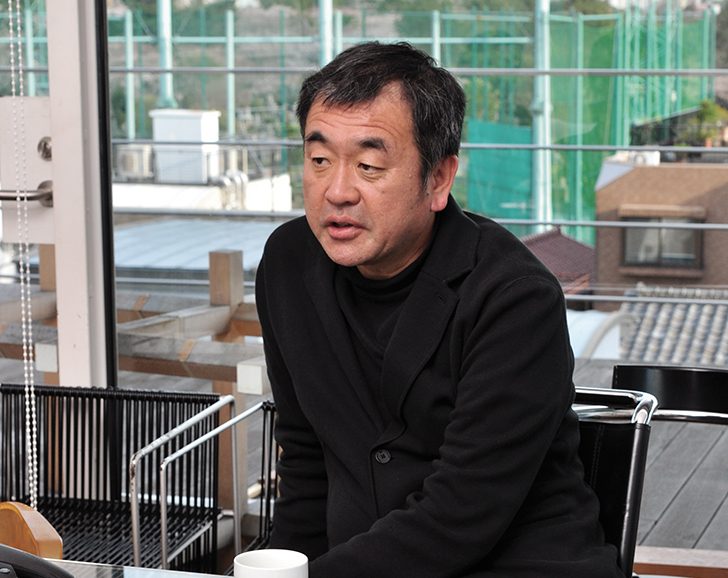

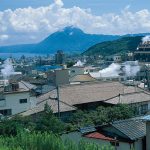

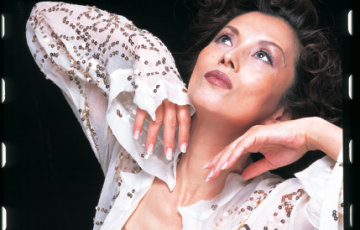
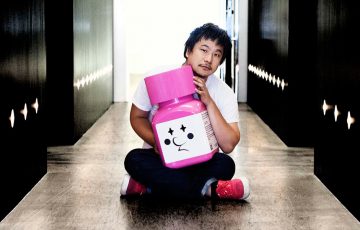

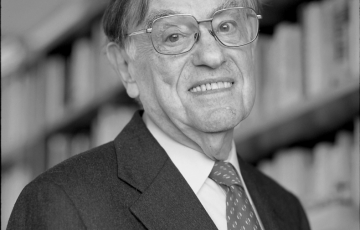
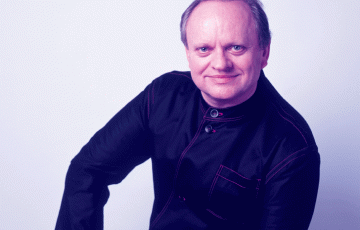





Recent Comments